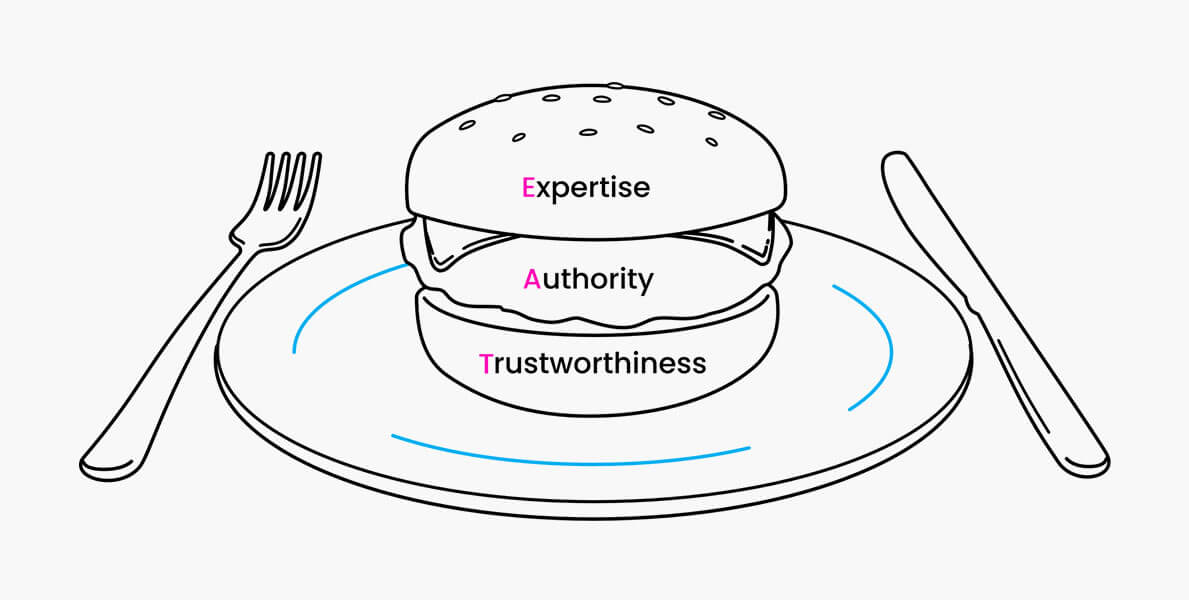Digital marketing moves fast. Unfortunately, that also means that there is a lot of outdated advice out there. Couple that with some just outright bad advice, as well as a myriad of tools telling you to focus on different things, and it can get confusing!
But we've helped hundreds of clients with their digital marketing efforts, so we know what does and doesn't work! At a recent Selesti Masterclass, I outlined five of the biggest mistakes we see digital marketers making. If you didn't get a chance to attend, here are the mistakes I identified, as well as tips on how to fix them.
Not questioning your data
We often speak to people who have a skewed impression of their marketing performance, or who wonder why certain channels "just don't work". And we've come across many that aren’t monitoring how their digital marketing is impacting on their core business goals at all!
But often these are a result of either misunderstanding the data at your fingertips, or not digging deep enough.
For instance, perhaps your content team is creating pieces off the back of Google Search Console data but it isn't having any impact, and you're beginning to suspect that content marketing "just doesn't work".
Or perhaps you're looking at your Google Analytics data and seeing that visitors to your website from social media just don't convert, and you're thinking that social media "just doesn't work".
The problem is often not in the work, but in the data analysis. The secret is to not look at data in isolation.

So you might have seen a surge in interest in Google Trends, but most of that interest originated in the US, and you're a UK-only business. Without applying a location filter to that data, you were chasing users that could never convert to customers, and neglecting the interests of your actual audience.
Or perhaps people visiting from social media are converting, but at a later date. After all, the modern user journey is not as linear as it used to be. Someone might visit your site from social media on their phone, but convert two days later on their PC. So, in this case, you need to account for assisted conversions to make sense of your data.
Ultimately, data is pretty meaningless without context. And this is something Google understands intimately. When you search for something, Google uses a lot of signals to determine what’s most relevant and useful to you. Signals like your location, what you have searched for in the past, what devices you log into, your Gmail settings. They use it all to improve their business offering to you.
Likewise, you can dive much, much deeper into your own data to gain a better understanding of what is working, what needs changing, and what you should be doing next.
Takeaways
Be data-led and interrogate data for insights:
- Use free data tools available to you (such as Google Analytics and Search Console)
- Drill down into your reports for insight, avoid top level
- Avoid looking at metrics without context — keep users front of mind
- External factors also influence your data
- Understand your customers’ user journeys can involve hundreds of smaller touchpoints, and across devices
- Look across channels — one channel in isolation won’t tell you much
- Consider assisted conversions — which channels are helping to generate a lead or sale, though it may not deserve all the credit
Not auditing your Google analytics
Data is great. It can tell you things about your customers that you don't know, and tell you what your business needs to do next to stay ahead. So it's vital to maintain your Google Analytics (GA) account, just like you need to maintain your car; sometimes things change or break, and sometimes an idiot will crash into you.
Many people fall into the trap of spending 5 minutes setting up their GA account and leaving it. But if you don't spend some time auditing your data, there’s a myriad of potential errors or inaccuracies that could creep into it.
Here are three common GA mistakes we often see:
.png)
Missing tracking
This is perhaps the biggest mistake: not having your GA tracking set up properly on your website! Whether the code has been improperly implemented or if it's missing altogether, it's easy to tell if your tracking is missing: GA will let you know!
Log in to your GA account and keep an eye out for notifications in the top right corner. If you're struggling to get your code placed properly, you could look into placing it via Google Tag Manager instead; it's much easier to do it this way, and Tag Manager offers a number of other benefits too.
Double tracking
Second, you might have pages that are actually tagged twice. This means that Google will be recording two sets of duplicate data for the same page, distorting your understanding of how your customers interact with your site. This means your decisions will be based on bad data!
Double tracking can be easy to miss, but one warning signs that your pages may be double-tagged is that your bounce rate will appear extremely low. That’s because instead of reporting one hit on a page, GA will record two.

If you think your pages are double-tagged, there are tools available that will help you check, such as Google's Tag Assistant Chrome extension.
Poor filter setup
Filters allow you to strip away bad data and focus on the information that matters. One of the mistakes we often see is that Analytics code gets copied into staging environments, or even onto other sites (which should really have separate tracking), and therefore the GA data shows over-inflated traffic.
The fix for this is pretty straightforward: you just need to filter by hostname.
To do this, log in to your main Analytics view, and go to Audience, Technology, and Network, then click on hostname at the top. This is what you might see.
The first line on the table is what we want to see: the traffic on your website. Unfortunately, all these other lines are other sites that contain the same tracking code as your site. The tracking code has been included on the site’s staging environment, as well as a couple of other domains.
If you're seeing something like this in your own GA account, go to Admin, and look for filters under the view settings. Here, set up a new filter to include only traffic to your hostname. It's best practice to either set up a new view to track this cleaned-up data, or make the change on your existing view and add an annotation to mark the date this was done; that way anyone looking at your data will understand the change.
Leaving SEO until last
SEOs need brilliant developers, and vice versa, to make things happen. But one of the biggest assumptions I see time and time again, and one that can have a huge (negative) impact on the success of your website is this: “I have a developer, SEO has been taken care of”.
Collaboration is a must in SEO! Don’t leave your development team without any support. Let them do what they do best, and let an SEO do what they do best.
ASOS gave us an infamous example of how leaving SEO until last can cause problems when their profits took a hit of 87%, partly caused by several SEO issues that weren't ironed out before they launched its new website.

SEO needs to be baked right into your plans for any migration or website launch because Google's entire understanding of your website is based on your existing setup. Every time you make a change, that understanding, and therefore your position in the SERPs, is at risk.
So if you want to migrate, launch a website, or make any other change, think of SEO at the beginning. Not at the end. Especially not after your launch!
Not designing with the target customer in mind
So it's probably clear by now that I'm a big fan of data. And I think that everybody should be. But, surprisingly, research has revealed that 62% of us still rely more on assumptions and opinions rather than data to make decisions. The trouble with this approach is that it can lead us to designing with ourselves in mind, rather than the customer.
It's an easy mistake to make. It’s so easy to see things from our own perspective that we can end up loving our own content or our own campaigns and designs a little too much. And we end up forgetting about who we are trying to speak to.
But remember this: you are not your customer.
We’ve seen companies launch a rebranded site only to be shocked when their customers hate it. And sales decline. So they re-do it. Money, time and effort are lost, and customers are frustrated. All because the company worried more about designing a website that their CEO would like.
But your CEO is not the customer either.
Yes, the CEO might be a customer. But the actual customers, the one who bring in all the revenue, could very well have an entirely different perception of the business than the CEO. And the intent of your customers could be very different to that of your CEO.
Here's a perfect example: mobile-first design. Perhaps you use a PC at work and shop on your PC at home. That doesn't mean your customers don't visit your site on their phones. It doesn't mean they don't shop or buy on their phones either.

And, as I mentioned earlier, the user journey isn't linear anymore. Perhaps your customers are browsing your site (and your competitors' sites) on a mobile device before they make their decision?
You won't know without data.
Use tools like Google Analytics to learn about your customers' behaviour for free, and create user personas from the wealth of data at your disposal. This will help keep your target customers front of mind as you build a website.
It will also help with your content marketing. Rather than creating content you'd like to see, you can use this data to learn what kind of content resonates with your actual customers. Once you have a strong idea of what your customer truly wants and when, you can create content to match those desires and needs.
And don't forget that people aren't always rational. In fact, we're very often emotional. So when you think rationally about what you think your customer wants, it might not tally with their emotional behaviour. An emotional customer is not a bad thing, by the way: after all, impulse buying is an emotional behaviour!
Takeaways
Your biggest assets are your people. Deliver them an experience they will love:
- Gain both quantitative and qualitative user data
- Prioritise UX
- Do user testing
- Set measurable targets for your marketing
- Consider the entire user journey
- And test it out, regularly
- Think about site architecture
- Is your structure organised in a way that is accessible and useful and makes sense to the user experience?
Failing to promote your content
Create it and they will come. Except they won't.
This last one is very common too. Because we all love what we do. And sometimes we love our content so much that we pour hours into creating it...and forget about actually promoting it afterwards.
They won't come if they don't know it exists.
Neglecting to promote content is a problem exacerbated by ridiculous articles promising that all you need to do in order to go viral is write at least 2,000 words.

Despite what many marketers have been saying for years, content isn't king. It just isn't enough by itself.
Strategy isn't king.
Brand strategy is king.
That's because Google loves brands.
If you’re not focusing on brand strategy, you’re missing out on a big part of how SEO, the overall marketing field, and even we as people, function. The need to create relationships, to connect people and things with other people and things is baked right into us. And this connection can help attract your target customer to your content.
And remember, branding is SEO as well. Who you are as a company, your identity, and your authority matters to your customers, your users, and to Google.
Speaking of authority, be sure to focus on E.A.T, especially if your organisation is in a YMYL (Your Money or Your Life) sector, such healthcare or finance. Google places much more emphasis on E.A.T. for these kinds of brands!
Takeaways
- Create your content based on data...and then promote it!
- Use your data to help identify where best to promote your content
- Don't just create content - create content that gives a clear impression of your brand
- Help Google identify you as a brand - claim your knowledge panel
- Don’t ignore structured data - test out how Google sees you the knowledge graph
Mistakes = opportunities
Don't worry if you've made all of these mistakes; you're not the only person who has! And each of these mistakes represent an opportunity to better understand your customers, to better reach them, and to drive profitability and growth for your business.
And if have a digital marketing problem I didn't mention here, get in touch with one of our experts and we'll make sure your problem gets solved!



